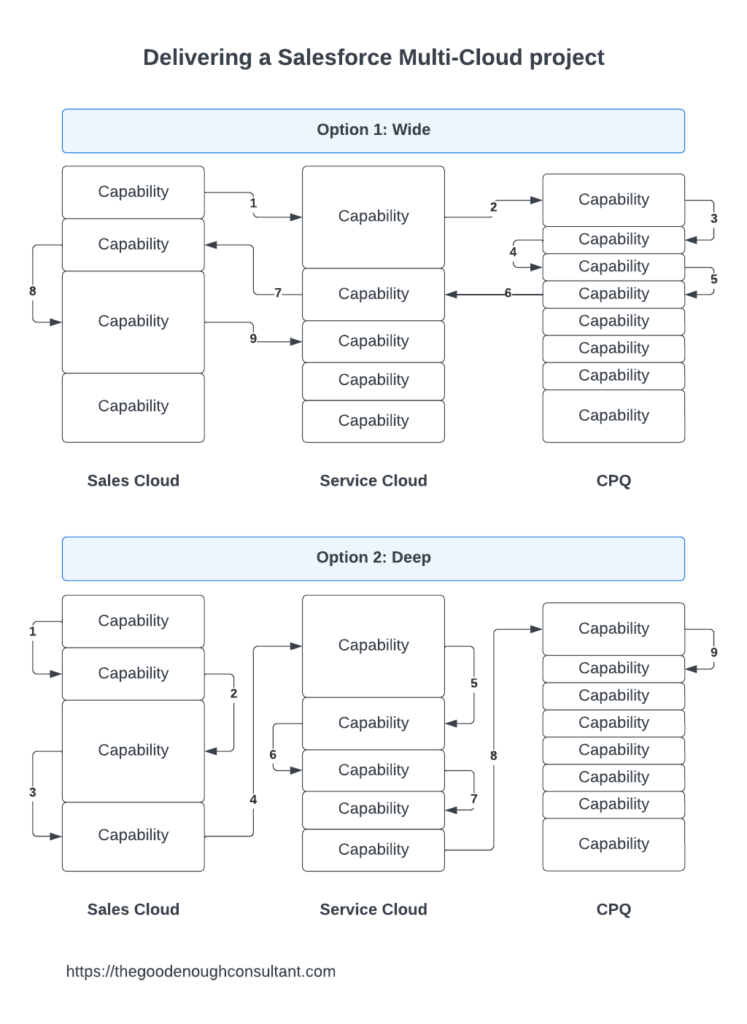Let’s imagine a scenario in which you’re asked to provide a Salesforce multi-cloud design implementation. Say, Sales Cloud, Service Cloud and just for fun, CPQ.
In each cloud, there are multiple desired capabilities, such as territory management, case management, and volume discounting.
How do you go about planning something this size?
At the highest level, there are two main approaches:
- A wide approach: this means starting with one capability in one cloud, then moving to a capability in another cloud, then a capability in another cloud, and so on. This provides a small amount of functionality in each cloud, and is also known as a parallel approach.
- A deep approach: this means starting with one capability in one cloud, moving to a capability in the same cloud and so on until you’re about 80% complete with that cloud. After that, move to a capability in another cloud. This provides a lot of functionality in each cloud, and is also known as a serial approach.
If you’re a visual person, checkout this image.

Regardless of your team’s size, it’s important to understand the client’s ability for change.
Generally, option 2, the deep approach is better because it allows you to
- Focus on fewer of the client’s teams at one time
- Explore technical feasibility and change management approaches
- Apply those lessons to the other clouds and teams
The takeaway
Prioritize going deep instead of going wide. You’ll discover many issues, roadblocks, and elements you didn’t anticipate before addressing the concerns of a broader audience.
